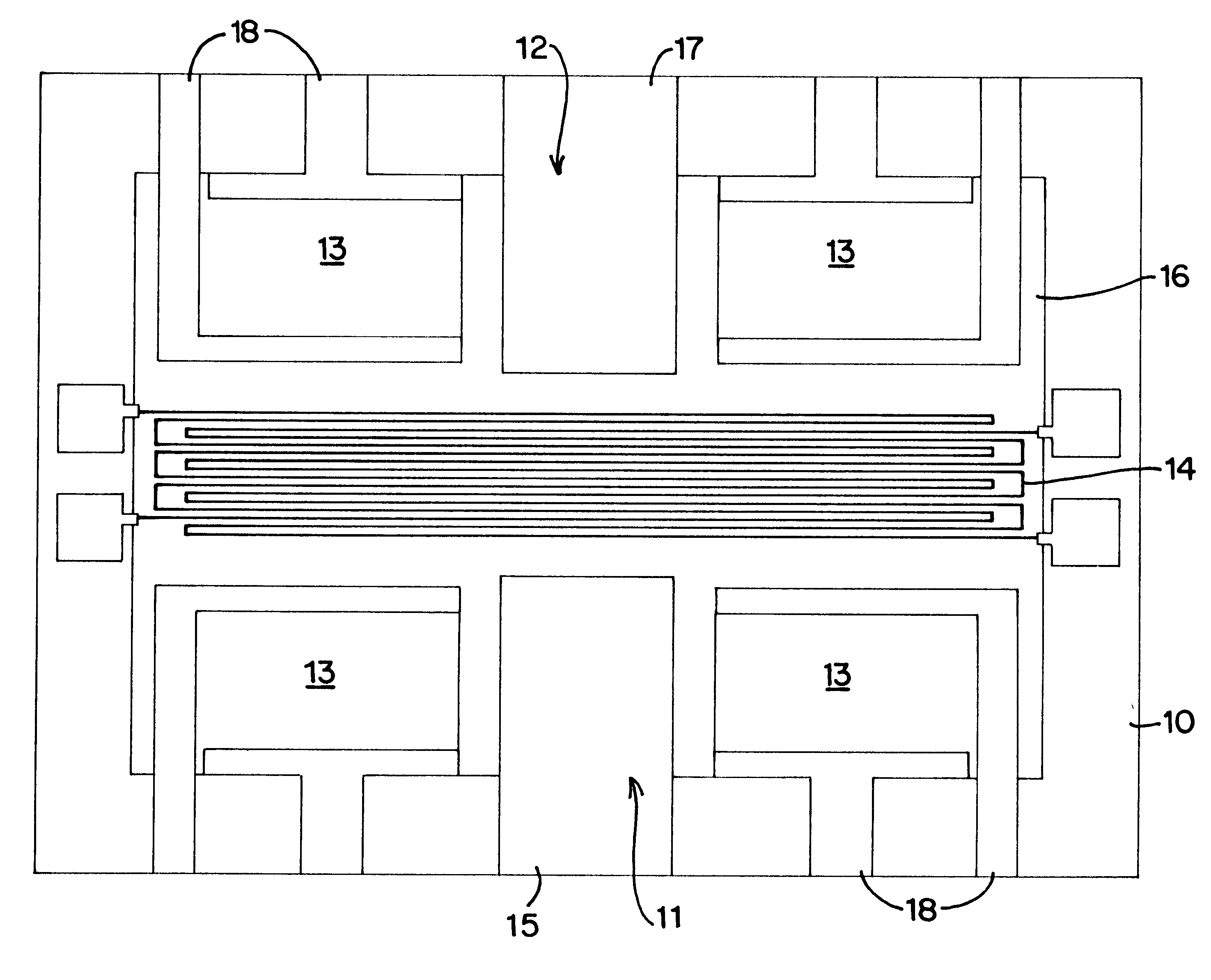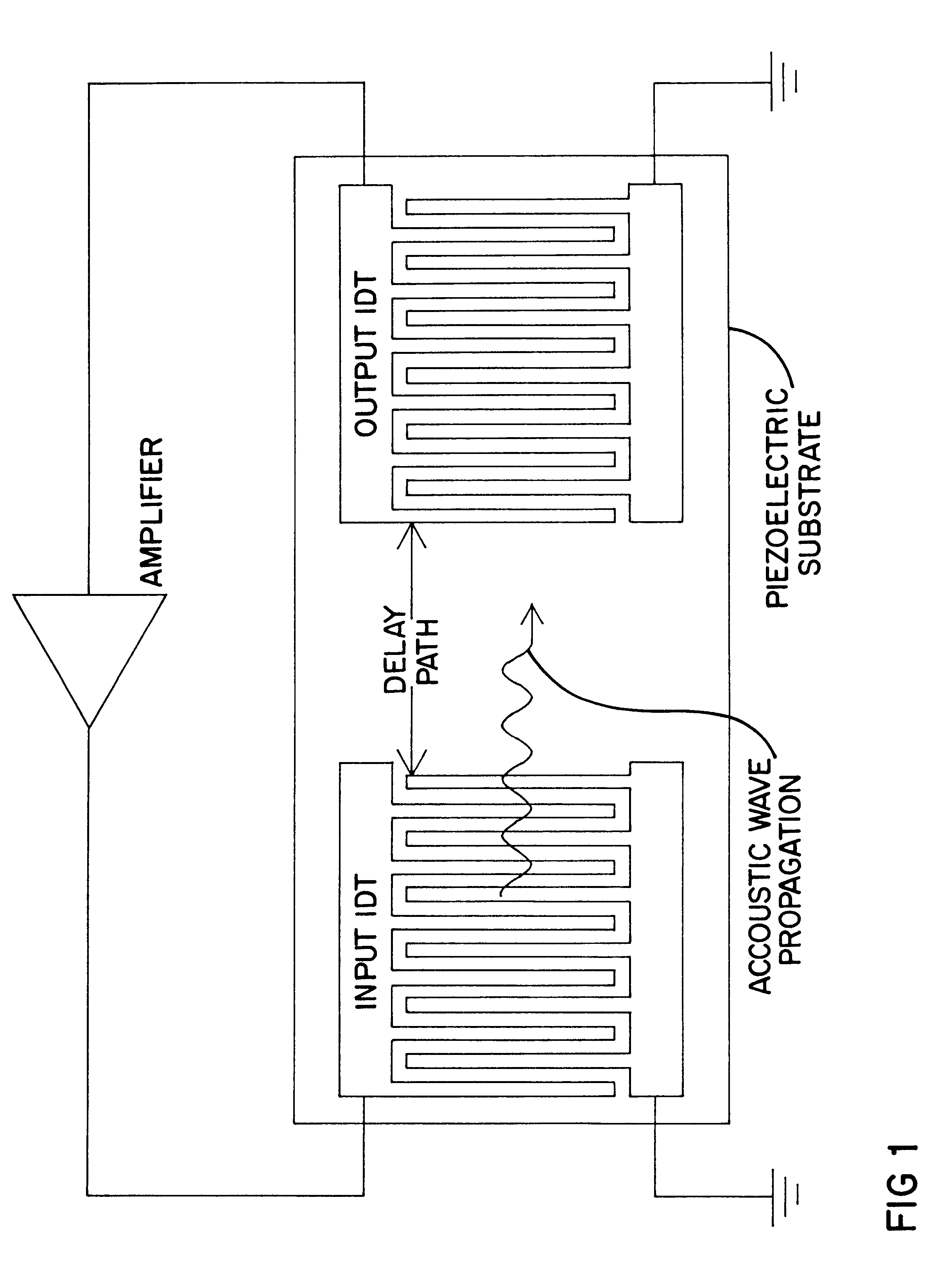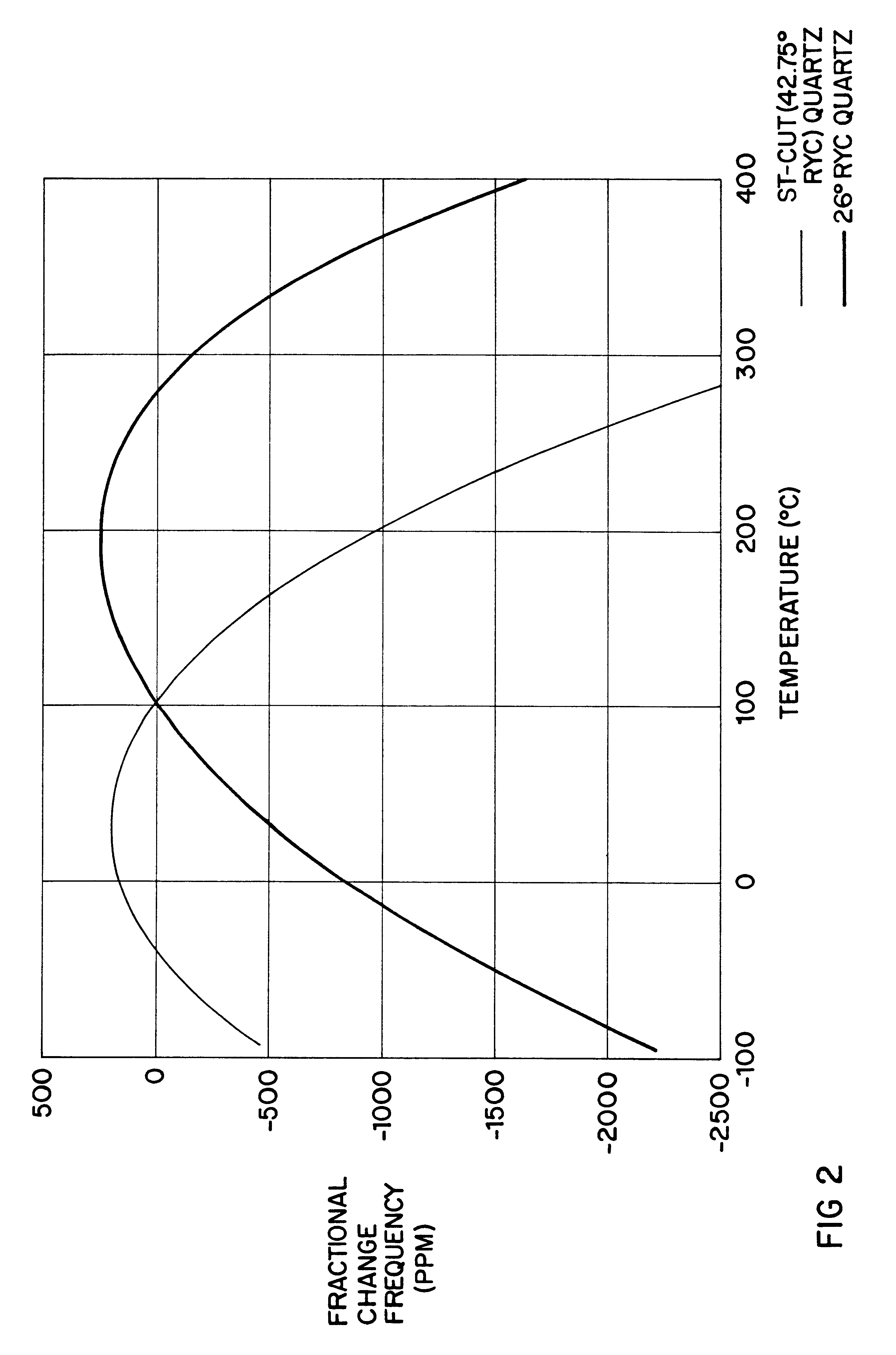Temperature compensated surface-launched acoustic wave sensor
a surface-launched acoustic wave and sensor technology, applied in the direction of vibration measurement in solids, generators/motors, instruments, etc., can solve the problems of limiting factors to the ultimate sensitivity of surface-launched acoustic wave sensors, noise induced, and noise in the operating frequency of sensors
- Summary
- Abstract
- Description
- Claims
- Application Information
AI Technical Summary
Problems solved by technology
Method used
Image
Examples
Embodiment Construction
Referring now to FIG. 5, FIG. 6, and FIG. 7, a temperature compensated surface-launched acoustic wave sensor in accordance with the present invention is formed on a suitable substrate 10, such as a piezoelectric material, preferably selected from, but not limited to, the group of .alpha.-quartz, lithium niobate, and lithium tantalite, or a non-piezoelectric material coated with a layer which provides acousto-electric coupling, such as zinc oxide. In one embodiment of the invention, the substrate is 24.degree. rotated Y-cut .alpha.-quartz; however, alternative substrate materials may be employed, provided such materials do not substantially adversely affect the general properties of the sensor as set out herein. Suitable substrates include, but are not limited to, lithium niobate and lithium tantalite.
Upon the substrate 10, interdigital transducers 13, referred to herein as IDTs, are deposed for the generation and reception of acoustic waves. The surface-launched acoustic wave mode c...
PUM
| Property | Measurement | Unit |
|---|---|---|
| thickness | aaaaa | aaaaa |
| thickness | aaaaa | aaaaa |
| thick | aaaaa | aaaaa |
Abstract
Description
Claims
Application Information
 Login to View More
Login to View More - R&D
- Intellectual Property
- Life Sciences
- Materials
- Tech Scout
- Unparalleled Data Quality
- Higher Quality Content
- 60% Fewer Hallucinations
Browse by: Latest US Patents, China's latest patents, Technical Efficacy Thesaurus, Application Domain, Technology Topic, Popular Technical Reports.
© 2025 PatSnap. All rights reserved.Legal|Privacy policy|Modern Slavery Act Transparency Statement|Sitemap|About US| Contact US: help@patsnap.com



